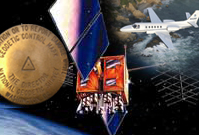Thursday, July 21, 2011
NOAA to Test Wave of the Future: Validation of Gravimetric Geoid
On July 19, working with international colleagues and state, local, and university partners, NOAA began the process of validating an important component of the latest gravity surface model (the "geoid"). Tests performed over an approximate eight-week summer schedule will involve a comprehensive survey along a 300-kilometer transect from Corpus Christi to Austin, Texas. The survey will provide two independent determinations of the shape of the geoid to be used to evaluate the accuracy of a new geoid or gravity model. This new geoid will include recently acquired airborne gravity data as part of NOAA's Gravity for the Redefinition of the American Vertical Datum (GRAV-D) project. The comparisons will provide a test and calibration for the data to be used to create the next generation vertical datum. By 2022, NOAA expects to transition to a gravity-defined vertical datum, accessible to anyone with a Global Navigation Satellite System receiver. With the new gravity-based datum, contemporary high-accuracy vertical positions on the Earth's surface will be much more publicly accessible and will help to reduce errors, an invaluable benefit considering, for example, that an incorrect height of a half meter in a coastal area can affect hundreds of thousands of acres. For more information, contact Mark Eckl.



